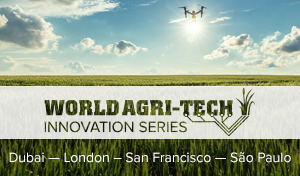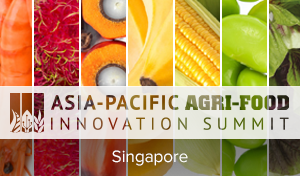In the climatically vulnerable regions of MEASA, how can we feasibly grow drought and heat tolerant crops, and what strategies are needed to boost the production of these tolerant crops at scale? Experts share insights into the work carried out in genomics and breeding for arid climates.

Where are the most exciting areas for research and innovation in crop biotechnology for desert environments?
Gretchen Weightman, Senior VP, APAC, Middle East & Africa (AMEA), ILLUMINA: “Genomics, genetic engineering, and precision breeding techniques play a crucial role in developing crops that thrive in arid conditions, thereby contributing to food security in water-scarce regions. These methods enable detailed characterization of complex genetic traits, such as drought tolerance, and accelerate selection of new varieties adapted to arid conditions. Additionally, advancements in precision agriculture can enhance crop productivity in dry climates while simultaneously preserving vital resources. Collectively, these innovations offer the potential to make agriculture more sustainable and resilient in the face of climate change.”

Dr Khalid Mahmood, Head Agri-Tech & ESG, MENA, ROTHAMSTED RESEARCH: “The advancement in gene editing technologies using tools like CRISPR-Cas9 offers precise and targeted methods for crop improvement, including those specific to desert agriculture. The targeted desert agriculture biotech research and innovation could help deliver drought-tolerant crops that can thrive with minimal water, through identifying and engineering genes that confer drought tolerance, allowing them to survive and produce yields with limited water resources; salt-tolerant crops that can efficiently exclude salt from their roots; heat-tolerant crops, taking examples of the indigenous plants through genetic modification or breeding; water-use efficient crops, through reduced transpiration rates or improved root systems; pest and disease resistance to reduce the use of chemical pesticides, which can be expensive and environmentally damaging; and improved nutrient use efficiency.”
How can we increase production of salt, heat and drought-tolerant crops such as quinoa, salicornia, sesbania and safflower by farmers in marginal environments?
Gretchen Weightman: “To boost the production of salt, heat, and drought-tolerant crops governments and businesses need to prioritise sustained research efforts to develop new stress-tolerant crop varieties by adopting precision breeding and agricultural biotechnology. Creating new varieties of halophytic plants and crops, which can be used in crop rotation, can help soil amelioration. Combined with other regenerative agriculture techniques, such as improvements of soil microbiome, these approaches can ensure long-term soil fertility. It’s crucial for governments to establish policies and incentives that promote cultivation of the most productive and well-adapted crops and varieties.”
Khalid Mahmood: “Through implementing a holistic approach combined with technological innovations, sustainable practices, access to seeds, technology, capacity building, and market access, farmers in marginal environments can enhance their ability to produce salt, heat, and drought-tolerant crops. The salt, heat, and drought-tolerant crops of quinoa, salicornia, sesbania, and safflower have great potential to provide food and forage but would require supply chain development. There is a huge gap for meeting the livestock forage demand, promoting these crops on marginal lands could help address the indigenous feed production. We should also explore agroforestry production systems that would help to restore carbon in soils. This will also help achieve crop diversification and support biodiversity.”
What crops can and should be grown at scale in the Middle East, in a way that is both economically viable and environmentally sustainable?
Khalid Mahmood: “The local indigenous crops that require less water and are suitable for extreme weather conditions should be promoted. Conventional date palm cultivation could be economically viable and environmentally sustainable when managed efficiently. There is a potential for drought-tolerant crops that include barley, oats, millets, sorghum, quinoa, and legumes. Wheat is still a major staple crop but would require developing varieties that can grow under less intensive system which is much more sustainable. The most suitable legume crops of chickpeas, fava beans, and lentils could not only provide protein but also improve soil fertility through nitrogen fixation and improve biodiversity. The forage crops of guar gum, millets and sweet sorghum could be good alternate forage crops compared to alfalfa that requires a lot of water.”

Payam Pourtaheri, Co-Founder & CEO, AGROSPHERES: “There are successful case studies of regenerative agriculture initiatives globally that have improved soil health. For example, projects like the “Regenerative Organic Certification” in the United States, “The 4 per 1000 Initiative” in Europe have demonstrated significant soil health improvements through regenerative practices. While these initiatives may not be directly transferable to the MEASA region due to different agricultural contexts, they serve as valuable inspiration and reference points.”
Learn more about the feasibility of cultivating crops in the face of climate stress, including innovative soil inputs to enhance fertility and water retention at the World Agri-Tech Innovation Summit in Dubai on December 4-5.

 CLOSE
CLOSE






